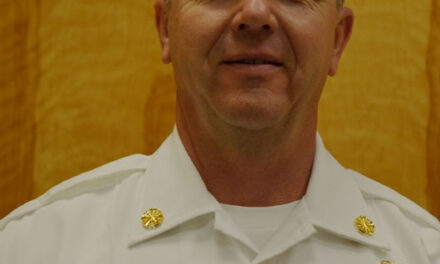Belen
As the walls of a Belen landmark are torn down, memories and stories flow through the community.
Many lives were impacted by the dedicated people working within the walls of the building at 520 N. Main Street that served as the Belen General Hospital and later as the Belen School District’s administration building.
“I have such mixed emotions,” said Luis Torres, former owner of Belen General Hospital. “Watching the walls go down is like watching a child die. But we have to make room for progress.”
The memories for Torres are both of personal joy and sorrow as he recalls the births of his two children and the deaths of his parents occuring in the facility.
But his memories are also of the many people he and his staff were able to serve.
“We were proud to serve the community,” Torres recalled of the hospital that operated at the location from 1946 to 1971. “Our staff was dedicated to the people of Belen. Running the hospital was not a matter of finances, it was that we were serving the community.”
Torres was actually the third owner of the medical facility. Dr. Joseph Peterson, with the help of Dr. Arthur Llewelyn, opened the Belen Osteopath Clinic in 1946.
Ownership changed in 1948 when Dr. C.R. Shelley and Dr. Leith Mitchell purchased the clinic.
The clinic gained hospital status in 1950. In that same year, Torres came from the Albuquerque Veterans Administration Hospital to join the Belen staff as the lab and X-ray technician.
“With the hospital status, we were able to perform surgeries, as well as deliver babies,” Torres said.
Eight years later, Torres purchased the hospital when Shelley indicated he was going to close the facility.
“I felt the community needed a hospital and I figured out a way to finance the purchase,” he said.
From the time Torres came to town, he said, his purpose was to “prolong lives. No one but God can save lives,” he added.
“When I first came here, the infant mortality rate was at 27 percent. After a year, it was down to 1 percent. This was because more people were having their babies delivered in the hospital instead of in their homes. Mother fatalities also decreased because we were able to have blood transfusions for them.”
As the lab technician, Torres also began blood-typing the people in the community.
“I held a drive to determine the Rh factor of the people in the community,” he said. “This program had two goals: first to let people know what their blood type was, and, second, to set up a blood bank donor list.”
The blood donor list allowed Torres to find rare-blood-type donors quickly in case of an emergency.
“We took care of the types of cases our doctors could handle,” he said of the staff’s medical care. “The complex cases were sent to Albuquerque after we stablized the patient.”
As the lab technician, he also had the task of determining when a person had a serious illness such as leukemia.
“It was also sad to have to tell the doctor that type of news,” he said.
Torres was more than an owner of the hospital or the administrator; he was a friend to the people coming to the hospital for their medical needs.
“I always said ‘we’re here to take care of the people first. We’ll argue about the bill later,'” he said.
Through the years, Torres received payment for services in many interesting ways.
“When people didn’t have money, we figured out a way for them to pay,” he said. “We received payment from farmers in beef, vegetables, eggs.”
One young man even did yard work for the the hospital to pay for the birth of his child.
“When he brought his wife in to have a baby, he told me he didn’t know how he was going to pay for it,” Torres said. “I told him, ‘I need the yard mowed.’ He said ‘I’ll do that for you.’ We settled on $3 per hour for his labor, and he worked off the bill.”
Torres said, as in any business, some people honored their bills and others didn’t.
“One man, whose wife died despite our efforts, paid a dollar a week until the $600 bill was paid off. He came to my office every Monday morning with his payment,” he said.
Torres was also known for being the type of administrator who would do whatever had to be done.
“Many an evening, when I’d get home for supper, the phone would ring and I would be needed back at the hospital. But I didn’t mind because I was serving my community,” he said.
He was also known for his concern for the patients. “I walked the halls and visited the patients each day,” he said. “I wanted them to know we cared.”
Belen General Hospital was also more than a medical facility. A vocational program for nurse’s assistants was established with Belen High School and girls were introduced to the world of medicine by working at the hospital.
As the years passed and the federal government began requiring facility improvements so the hospital could qualify for Medicare and Medicaid payments, Torres realized a new hospital was needed.
“I had done all the remodeling I could at that location,” he said. “I was looking for a new site, and I had the finances lined up at the banks. Then Presbyter-ian Healthcare approached me to buy the hospital. They liked the way we operated our facility.”
In 1971, the hospital ownership changed hands and Torres agreed to stay on as the new hospital’s administrator.
But the need for a new hospital did not end. “Prebyterian said they’d build a new hospital if the community donated $250,000 plus the land,” he said. “The community pulled together, and we raised more than the required amount and the new hospital was built in 1979.”















